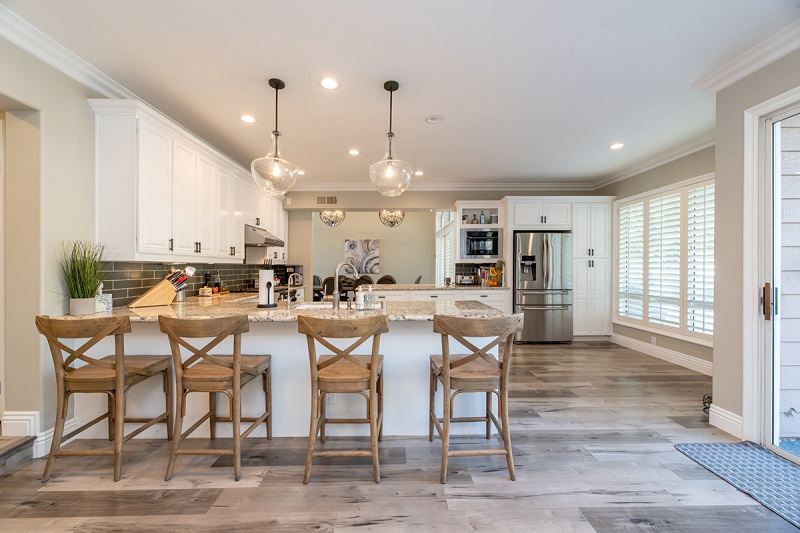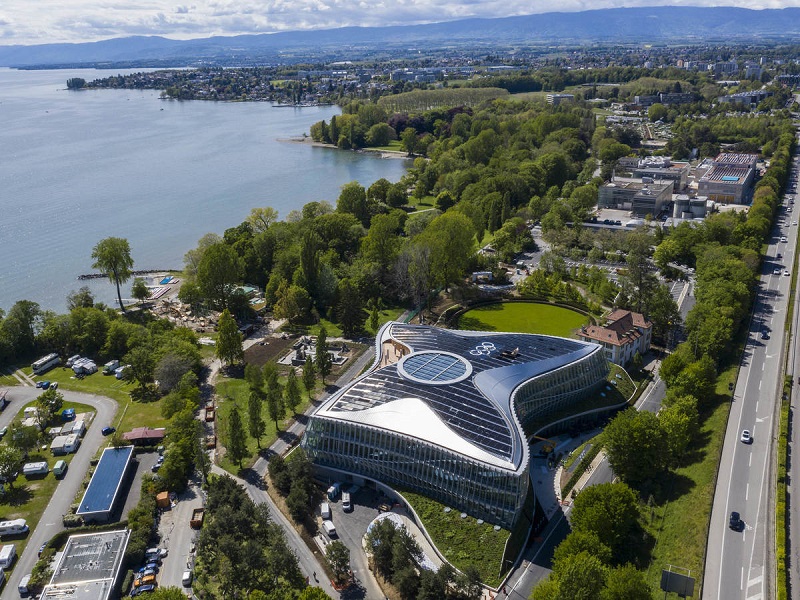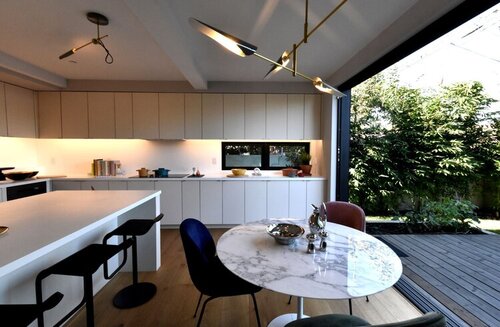EarthTalk®
From the Editors of E – The Environmental Magazine

If it’s time to remodel your kitchen, you’ll have lots of earth-friendly choices to choose from for paint, counters, flooring and appliances. Credit: Pexels.
Dear EarthTalk: My kitchen is overdue for an update. I’m wondering what’s the latest, greatest and greenest today in countertop materials, flooring, paint and appliances? – H. Barton, via email
Kitchens have traditionally had one of the worst environmental footprints in the home. However, technological advancements have brought more eco-friendly materials and tools for greener kitchens. Choose components wisely and you can do the planet a favor while you make the most lived-in room in the house better for everyone.
The first place to start thinking greener is paint. Conventional paint, especially oil-based varieties, contains lots of volatile organic compounds (VOCs). These are off-gassing synthetic chemicals that not only can cause human health issues like headaches and nausea and have been linked to some cancers and also contribute to the build-up of ground-level ozone, a noxious pollutant in its own right. If you want to avoid VOCs in your new kitchen, paint it with water-based paints bearing either the Greenguard or Green Seal logos—these certifications ensure the paint in the can has little if any VOCs. Popular eco-friendly brands include AFM Safecoat, ECOS Paints, Bioshield and Behr Premium Plus.

Countertops are another kitchen area where we’ve come a long way with eco-friendly options. Teragren’s “carbon-negative” counters are made of bamboo, which grows quickly and sequesters carbon dioxide in the process. Another great green choice for counters is Greenguard-certified Grenite, which uses recycled quartz, ceramics and acrylic to create countertops that are affordable and resistant to heat, stains and scratches. If you’re looking for a colorful or more distinct option, take a look at Richlite, also certified by Greenguard as well as the Forest Stewardship Council (FSC). This innovative material is created by stacking recycled paper sheets, saturating them with phenolic resin, and applying heat and pressure.
Eco-conscious choices now also abound in flooring. Bamboo works as well on floors as countertops. Another increasingly popular green flooring option is cork. Contrary to hardwood, production of cork only requires the outer bark of a tree. Cork contains a natural waxy substance called suberin that prevents water and gasses from penetrating through. Accordingly, cork flooring offers excellent insulation, energy conservation, durability of up to 30 years, and natural hypoallergenic and insect-repellent properties. However, cork floors are often stained and coated, so look out for VOCs in the additives. Yet another great green choice for kitchen floors is Marmoleum, a naturally germicidal, waterproof and VOC-free form of linoleum composed of 97 percent natural material.
Upgrading to modern, energy-efficient appliances is another way to make your kitchen remodel pay dividends for the planet. Keep an eye out for appliances bearing the EnergySTAR certification, which ensures that the appliance you are eyeing meets or beats U.S. Department of Energy standards for energy efficiency. This will help lower your greenhouse gas emissions and also reduce your energy bill. Another earth-friendly upgrade would be to ditch the gas stove for an all-electric induction model; you’ll not only lower your carbon footprint but also probably improve the indoor air quality inside your home.

CONTACTS:
UL GREENGUARD Certification, https://www.ul.com/services/ul-greenguard-certification;
Forest Stewardship Council (FSC), https://fsc.org;
EnergySTAR, https://www.energystar.gov/; Teragren, https://teragren.com;
Grenite. https://grenite.com.
EarthTalk® is produced by Roddy Scheer & Doug Moss for the 501(c)3 nonprofit EarthTalk.
See more at https://emagazine.com.
To donate, visit https://earthtalk.org.
Send questions to: question@earthtalk.org.
